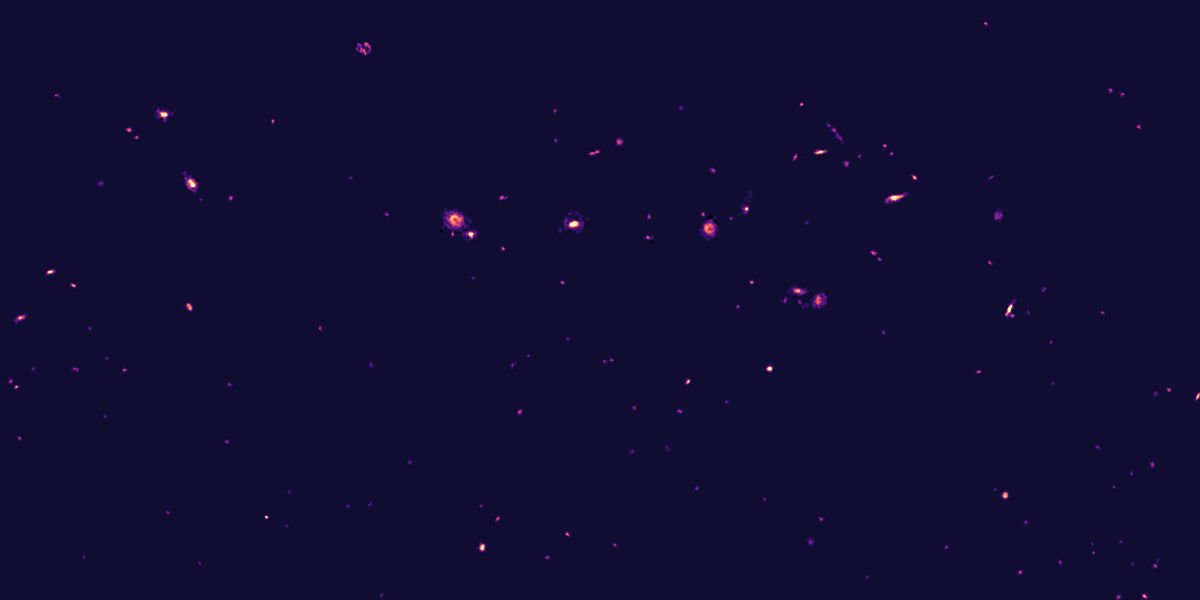Being the most abundant chemical element in the Universe, hydrogen plays a fundamental role in the evolution of galaxies as the fuel for star formation. One way of mapping the distribution of hydrogen gas in the Universe is through observations of the 21-cm fine-structure line of neutral, atomic hydrogen (HI) using radio telescopes such as the recently completed Australian Square Kilometre Array Pathfinder (ASKAP) in Western Australia. This allows us to determine the amount of neutral hydrogen gas in galaxies and hence the total amount of HI in the local Universe, usually characterised by the space density of neutral hydrogen, ΩHI.

The distribution of neutral, atomic hydrogen (HI) in galaxies in a small region of the sky mapped by the WALLABY survey.
The WALLABY all-sky HI survey which is currently being carried out with ASKAP is expected to map the HI content of approximately 200,000 galaxies across a large part of the southern sky over the next few years. This unprecedented sample will enable detailed measurements of the amount of HI in the nearby Universe out to a redshift of z ≲ 0.1, e.g. by measuring the so-called HI mass function, the space density of galaxies per HI mass interval. The HI mass function typically has the form of a power-law with an exponential drop at the high-mass end. Earlier results indicate that both the power-law exponent and exponential turn-over point of the HI mass function may vary with environment and redshift. The large sample size of WALLABY will allow us to carry out detailed studies of how the HI mass function varies with environment (e.g. cluster galaxies vs. field galaxies) and redshift.
In the very nearby Universe radio telescopes provide sufficient spatial resolution to directly image and study environmental processes that lead to the removal or accretion of gas in galaxies, including tidal interaction, ram-pressure stripping and accretion of satellite galaxies or intergalactic gas. Several important aspects of gas accretion and removal processes — such as the relative importance of each process in different environments or the time scales on which gas is accreted or lost — are not well understood yet. Combining existing HI data with new data from surveys such as WALLABY will enable us to shed light on some of these outstanding questions.
List of potential projects
- The HI mass function and its variation with redshift and environment
- Gas accretion and removal in the Milky Way and other galaxies
- Spatially resolved HI scaling relations in the nearby Universe
- Source detection and parameterisation algorithms
Please get in touch (tobias.westmeier@uwa.edu.au) if you are interested in a PhD project in one of these areas.
